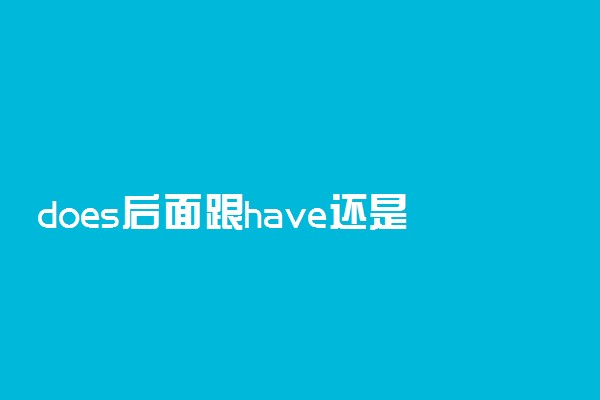does后面是have。因为do是助动词,后面要跟实义动词的原形。have就是原形动词,变化的第三人称单数才是has。如:Do you have a bike? Does he have a friend?

do和does的区别
A:作为行为动词“做”;B:作助动词,用于一般现在时态,和行为动词共同构成谓语,。
一、用do
第一人称:I(我)、we(我们)第二人称:you(你)、you(你们)
第三人称复数:they(他们),多个人
如:
Do you like music?
你喜欢音乐吗?
What do you do? 你干什么?
I do with a cup of tea
我做一杯茶。
二、用does
第三人称单数:he(他),she(她),it(它),单人或单物。
如:
Today he does not have to worry about making a living.
现在他不用为生活发愁了。
What does it have to do with you? 与你何干?
LILI does not understand finance at all.
莉莉对财务一窍不通。
Have和has的区别
A:实义动词“有”,B:作助动词,用于现在完成时态,和行为动词共同组成谓语。
一、用have
第一人称:I(我)、we(我们)第二人称:you(你)、you(你们)
第三人称复数:they(他们),多个人
如:
You haven't sent her away, have you? 你还没有把她送走,是吗?
I go out and have a walk around 我出去在周围散一会儿步。
We have a good friend.
二、用has
第三人称单数:he(他),she(她),it(它),单人或单物
如:
his theory has now been discounted.
这个理论被打了折扣。
He has been on Death Row for 11 years 他已经在死囚区关了11年。
She has a good sister.